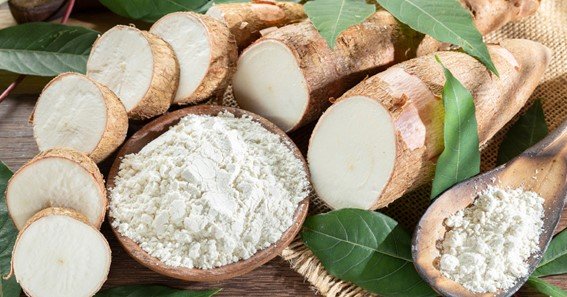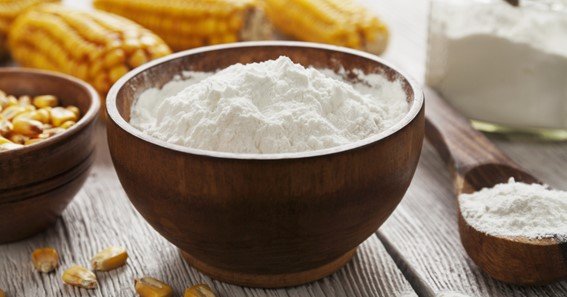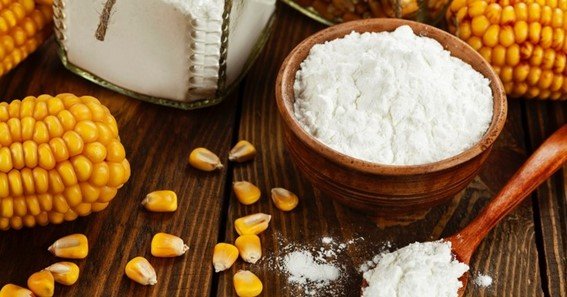What is modified food starch? Modified food starch is a versatile ingredient found in many processed foods, such as soups, sauces, and sweets. You may have been interested in what this word meant when you saw it on the list of materials for processed foods. Many soups, sauces, and desserts contain modified food starch. It stabilizes, extends shelf life, and structures food, so the food industry requires it. What distinguishes modified food starch from regular starch? This article covers what is modified food starch, modified food starch types, uses, benefits, health hazards, and more.
What Is Modified Food Starch?
There are physical, chemical, and biological ways to alter the starches of wheat, potato, tapioca, and maize to make modified food starch. These changes make the starch more stable at high temperatures and through freezing and thawing by solidifying it. Adapted food starch works in all settings, whereas native starch doesn’t, making it a nutrient. This short briefing should have given you a basic understanding on what is modified food starch.
Different Modified Food Starches

Next after what is modified food starch, let’s learn about its types. Each type of modified food starch has a specific role in food preparation. Physical, enzymatic, and chemically modified starches are the main categories. Each variety has unique properties that make it useful.
Physically Modified Starch
This kind can be changed by heat or compression. These stages affect starch’s absorption, texture, and gelatinization temperature, making it better in diverse dishes.
Enzymatically Modified Starch
Enzymes break down starch molecules or alter their branching. Most of these changes are designed to improve syrups or food quality.
Chemically Modified Starch
Here, chemicals add functional groups to starch molecules to change their properties. Cross-linking, substitution, and acid hydrolysis are frequent chemical modifications. This can make starch more stable, adaptable to cooking conditions, and compatible with other components.
Understanding the many types of modified food starch might help you prepare food. Each type addresses distinct issues and improves food quality and utility.
Modified Food Starch Uses
Modified food Starch is commonly used because of its versatility and benefits. Many foods need stabilization, thickening, gelling, or emulsification.
Modified food starch thickens and uniformizes soups and sauces. It keeps the mixture from separating and maintains density in changing weather and storage conditions.
Modified food starch increases baked foods’ structure and moisture, improving their quality and shelf life. It also makes cakes, biscuits, and sweets look and feel good.
Modified food starch prevents ice crystals from forming and keeps yogurt and ice cream creamy.
Modified food Starch thickens and stabilizes ready-to-eat meats and foods, making them smoother and less moist. It also improves juice and taste.
Modified food Starch is significant in the food industry because of its versatility. Current food production relies on it for structure, stability, and shelf life.
Modified Food Starch Pros And Cons

Modified food Starch is a good food ingredient because of its various benefits. Its unique properties and versatility make food better and more helpful.
Smoothness is a major benefit. Modified food starch makes smooth, homogeneous soups, sauces, baked dishes, and dairy products. This texture alteration improves meals and makes customers happier.
Benefits include greater stability. Processing modified food starch in high temperatures, freezing, and warming does not affect its utility. This security maintains food quality and consistency on the shelf.
Modified food Starch keeps fluids in and prevents separation, extending food shelf life. This feature helps preserve freshness in sauces, salads, and baked goods.
Modified food Starch can also be modified for food preparation. It thickens, stabilizes, gels, and lubricates, making it vital in various situations.
How Modified Food Starch Is Regulated?
Several national and foreign groups regulate modified food starch use in food to ensure safety and quality. These groups regulate modified food starch production, use, and labeling. These rules safeguard customers.
In the US, the FDA considers this modified food starch GRAS. Scientific evidence and a long history of use suggest this substance is safe. The FDA regulates some medicine doses used in the transition process to protect consumers.
Other countries have similar laws to ensure safe and high-quality modified food starch. These guidelines ensure consumer health and safety when making and using modified food starch.
Conclusion
In conclusion, modified food starch is a versatile component that can improve food texture, stability, and shelf life. Due to its variety and quality can be used in soups, sauces, baked items, and dairy products. Modified food starch is generally safe, but people with allergies should know where it originates and how it may affect them. By regulating its production, usage, and labeling, regulatory systems ensure the safety and quality of modified food starch. Hydrocolloids, gluten-free flour, and natural carbohydrates all work without chemicals for those who choose them. Understanding modified food starch and how it is used in food preparation helps individuals make sensible choices and appreciate its importance in modern food production. This was in depth article for you to understand what is modified food starch.
FAQ
Which Food Starch Changed?
You can improve food preparation by changing starch physically, chemically, or using enzymes. This is modified food starch. Adding it to numerous foods improves stability, structure, and shelf life.
What Changed Food Starches Exist?
The three basic categories of altered food starch are physical, enzymatic, and chemical. Each type has unique benefits for different usage.
What Is Modified Food Starch’s Purpose?
It’s in soups, sauces, baked items, dairy, and processed meats. It strengthens, stabilizes, gels, and mixes.
What Are Modified Food Starch’s Health Risks?
Regulatory bodies consider modified food starch safe. People with food allergies or intolerance should know the starch’s source and allergens. Healthcare professionals can offer particular guidance.
What Foods Can Replace Modified Food Starch?
Natural starches like maize, potato, and tapioca, hydrocolloids like agar, carrageenan, and xanthan gum, and gluten-free starches and flours like rice flour and arrowroot powder can replace processed food starch. Both ways work without altering chemicals.
Sources:
https://en.wikipedia.org/wiki/Modified_starch
https://starchinfood.eu/question/what-is-modified-starch-and-why-is-it-modified/










